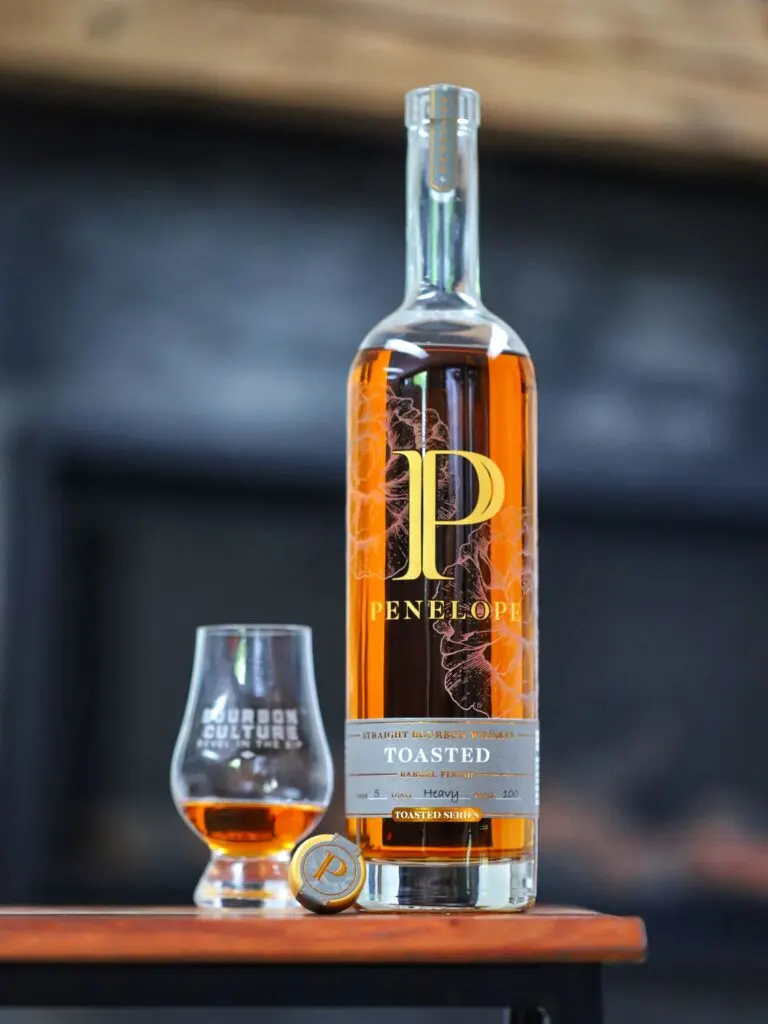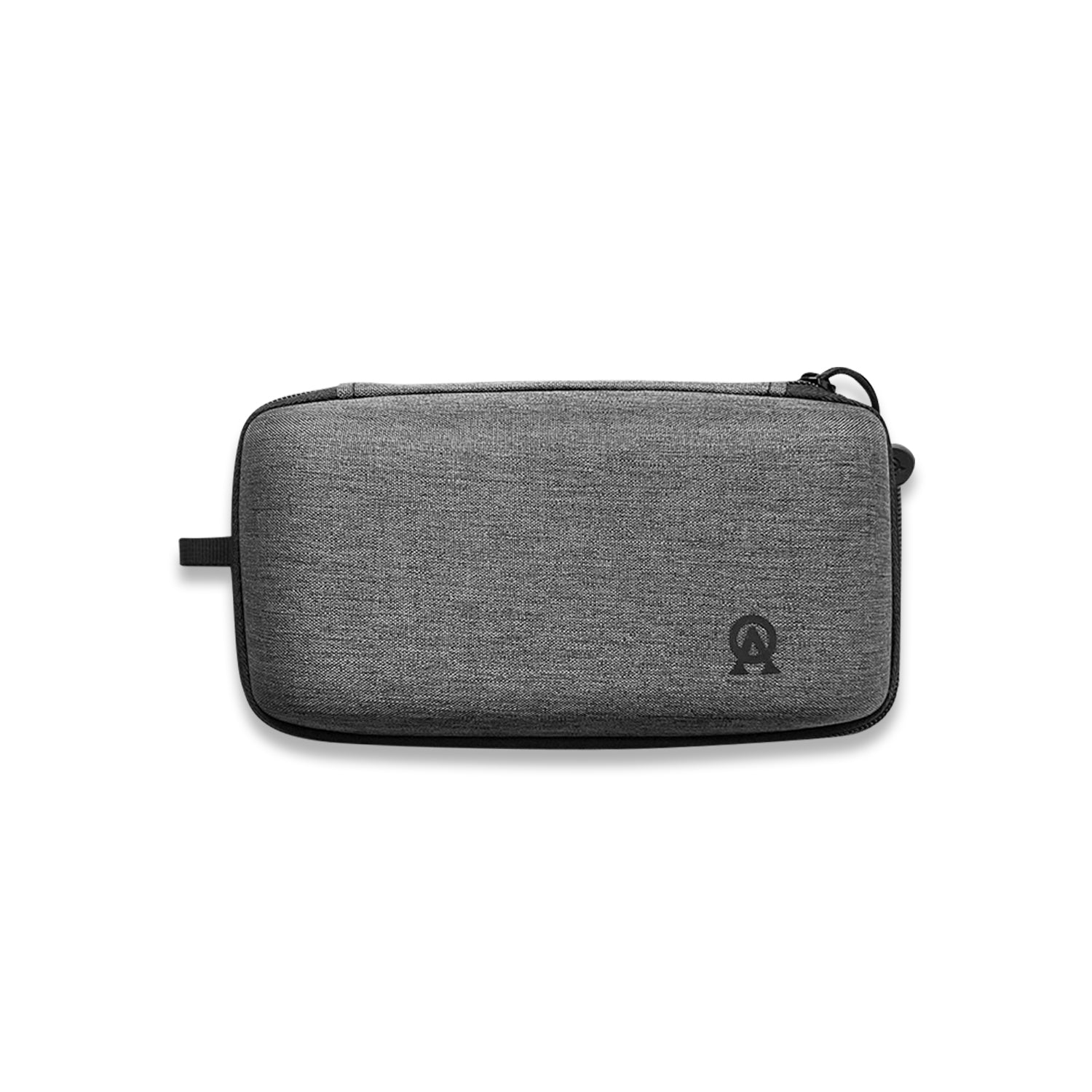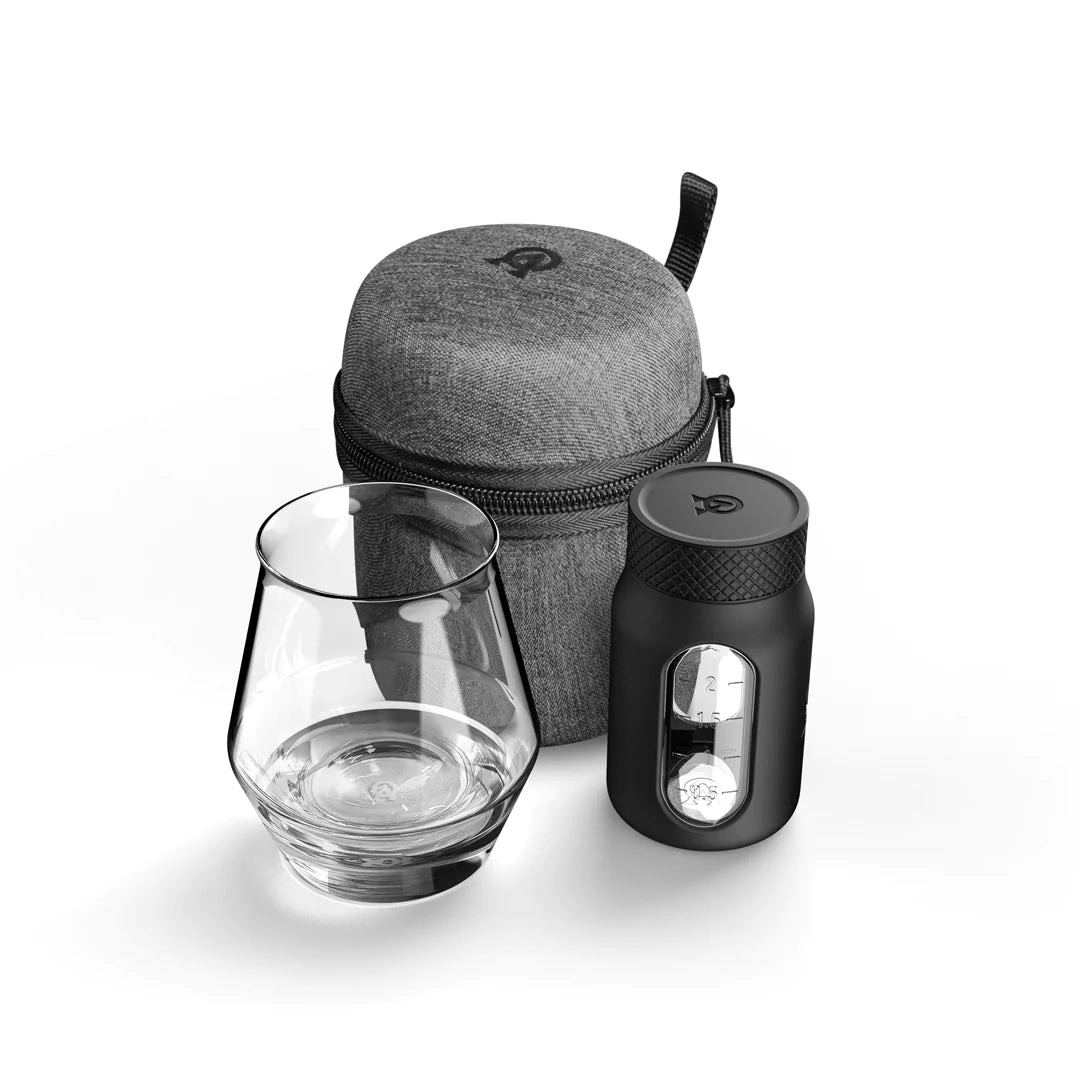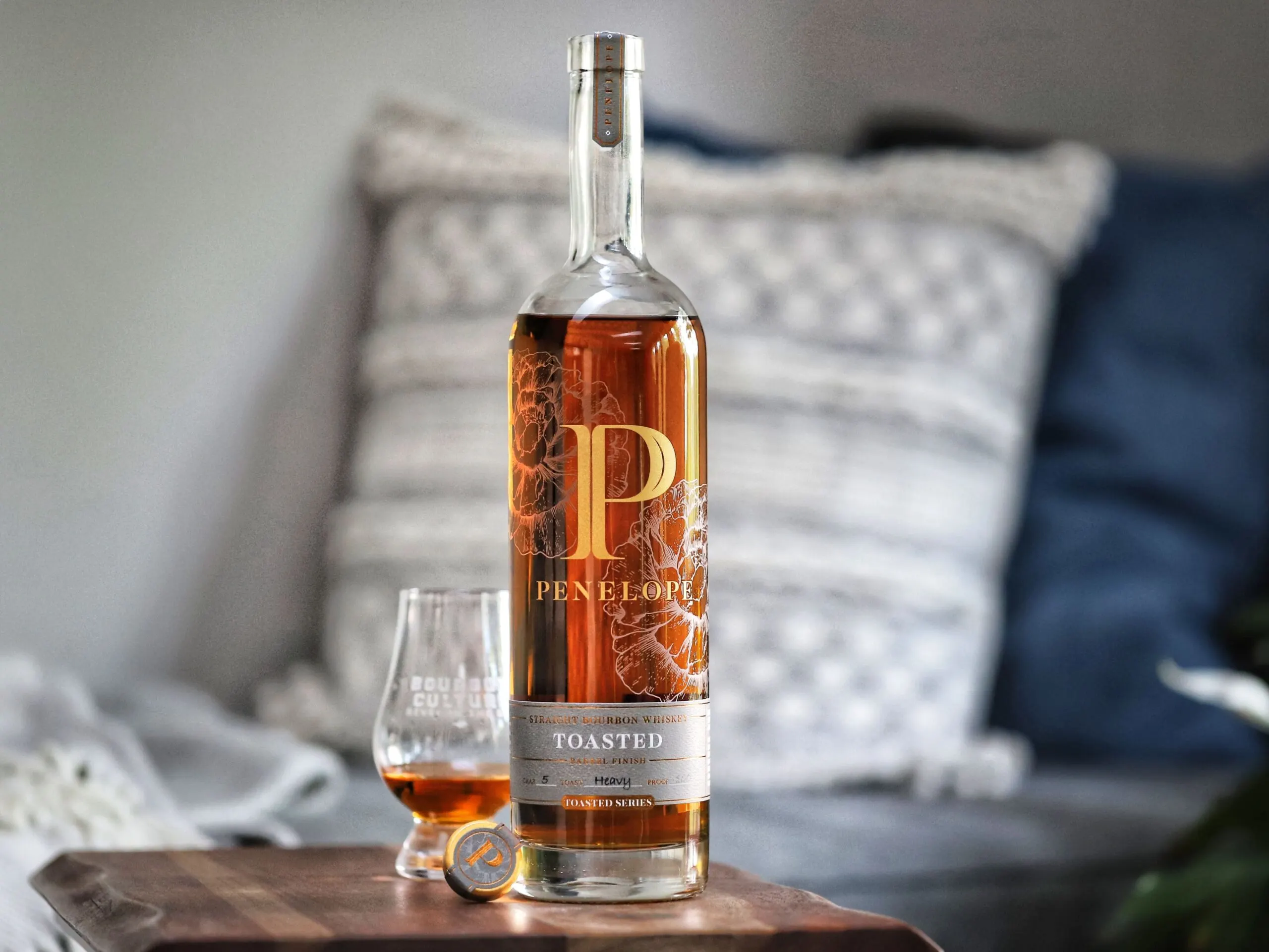| Don't like ads? | No ads |
Penelope Bourbon relies on three distinct methods to distinguish themselves from other producers who also source bourbon from MGP. The first is their four-grain bourbon blend. The second is their unique cask finishes. The third is their embrace of new technology like Oakscan to shape bourbons like Penelope Architect into something that it could never achieve with traditional maturation. Penelope Toasted Bourbon falls into the category of unique cask finishes and is the one I’ll be looking at today.
The first thing I’m going to do is define what it means to be a “toasted” bourbon. Back in 2014, Michter’s made that designation famous by introducing Michter’s Toasted Barrel Bourbon to the market. They had their barrel supplier create a batch of new barrels and only toast the inside – not char it.

How do you toast a barrel? The basic concept is to dangle a burning element into the center of the barrel, but not allowing the flame to come in contact with the wood. The toasting effect begins to chemically alter the wood grain by creating additional compounds like vanillin – the compound that our senses relate to vanilla. After Michter’s matures its whiskey, it dumps it into these secondary toasted barrels for additional aging (usually about a month).
The concept of toasted barrel finishes catches on
There are other bourbons like Woodford Reserve Double Oaked and Elijah Craig Toasted Barrel that also claim to use toasted barrels for secondary maturation. What makes them different is that they are given a light char after the staves have been toasted. This light char will definitely produce a different effect on the bourbon versus a barrel that has only been toasted.
Penelope also follows this trend where the secondary cask is toasted and given a variable char level. The bottle I’m reviewing today says that the secondary barrel was given a “Heavy” Toast level and a Char Level “#5.”
For the record, char levels aren’t a regulated term. If you truly want to compare char levels. you’d have to research how long the barrel was set on fire (in seconds). For example, one distillery’s char level #4 is not necessarily equal to another distillery’s char level #4.

Speaking of char levels, they generally don’t go above a Level 4. This is why seeing Penelope claim the barrel used on my bottle is a “Level #5” is kind of strange. Old Forester claims to use a char level #5 for the secondary barrels of their 1910 Old Fine Whisky label and Heaven Hill alluded that their “Heavy Char” releases of Parker’s Heritage were Level 5’s. Otherwise, it’s a term without much precedence. What does Level 5 mean? On Old Forester’s website, they explain that a char level this high is moments away from the barrel being completely incinerated. Believe it or not, a char level that high can result in even more sweetness being imparted into the liquid.
What bourbon goes into Penelope Toasted?
Penelope takes sourced MGP bourbon – aged between 4 to 6 years old – batches it up and fills up the newly toasted/charred barrels. No information is given on how long they let it age for, but I have my thoughts on that in the final section. For reference, Woodford Reserve Double Oaked continues to age in a secondary barrel for a full year. Old Forester 1910 is a few months less.
It’s unknown if this batch of Penelope Toasted uses their unique 4 Grain Mash Bill which sees MGP’s wheated (51/45/4), ryed (75/21/4) and high corn (99/1) bourbons all mixed together. Their website says it does. But the website also says that Penelope Architect uses it too even though I learned that Batch 6 only used the ryed bourbon recipe. This means that their products seem to vary with every batch unless it explicitly says on the label. So who really knows what’s in this?
One more thing to note: Penelope Toasted has previously came in barrel strength and barrel strength single barrel versions. But a 100 proof version seems to have become the standard bottling strength as their website makes no more mention of those two varieties.
Now that I’ve laid out what Penelope Toasted is all about, it’s time to get into tasting it. Here goes nothing! I sampled this neat in a glencairn.
Tasting Notes
Nose: Every time I dip my nose into the glass, I find youthful, grainy notes. For being a bourbon that’s at least 4 years old it, somehow smells much younger. There are scents of soot and charred wood – hardly the polished oak scents I was imaging before I ever opened the bottle. Behind this wave of “burnt” comes other scents like raw dough and burnt sugars. Vanilla is hard to find and I’m not really picking up on any fruits. Spices like cinnamon and pepper are raw and untamed too. We’re not off to a good start.
Palate: For only being 100 proof, this bourbon is HOT. It easily tastes like it’s 115 proof. The flavor is dominated by Cinnamon Red Hots candies up front with a bit of cherry and cacao nibs following. Then the dry, tannic, burnt notes begin to show up. Barrel char, charcoal, black pepper and burnt caramel. There is also a ton of raw corn. I don’t understand why this bourbon tastes so young.
Finish: The finish continues its theme of being raw and hot. It’s still got a pervasive soot that covers everything. Notes of burnt marshmallows and charcoal linger while the grainy nature of the bourbon continues.
Score: 3.5/10
I don’t understand what went wrong here. I’ve had five sessions with this bottle over a period of 3 weeks and cannot pick up anything different than what I described. The barrel finish seems to have impacted the bourbon by making it taste and smell sooty and burnt. What happened?

Perhaps some explanation lies in the length of time that the bourbon was allowed to rest in the secondary barrel. Dumping it out too soon may have had a negative impact by only allowing the charred bits to interact with the liquid. Had it seen a heat cycle or two, maybe the push/pull interaction between whiskey and oak could have filtered and mellowed it out. I’m not entirely sure of the specifics here, so it’s anyone’s guess.
Final Thoughts
Talking to friends and reading other reviews of this bottle (and the cask strength ones) paints a picture that a lot of people have found the same low points that I did. The general consensus seems to be that if you want a shot at enjoying Penelope Toasted, you should seek out bottles with the lowest char level number (which is 1). But I’m wondering if that would only solve half of the problem. The other half seems to be bourbon that tastes too young.
Penelope Toasted goes down for me as a disappointment. Architect (Batch 6) is the opposite. I have one bottle left to review – Penelope Barrel Strength Bourbon – before I can make an informed decision on if Penelope is a company that is a rising star or not. But one thing is for sure, avoid Penelope Toasted until they iron out the issues that seem to be plaguing it.
Featured Products
- Neat Traveler

- View Larger
- Description:The Aged & Ore Neat Traveler is a complete travel kit for spirits. We combined our widely praised Neat Glass with one of our 3oz Flight Bottles and housed them together in a custom EVA travel case. Perfect for a night away with your favorite pour. The tie
- Bottle Flight

- View Larger
- Description:The Aged & Ore Bottle Flight is a premium set of 4 custom silicone wrapped glass bottles designed to transport and share samples of your favorite spirits. The flight bottles come in a custom EVA travel case that fits perfectly in any small bag. An Aged &
- Travel Bundle

- View Larger
- Description:This Bundle combines two of our crowd favorite products, creating the ultimate travel bundle to bring along your favorite spirits and glassware. Bundle Includes: Neat Traveler (Gray) Bottle Flight (Gray) Note: This bundle is only available in gray and col
*Bourbon Culture is reader-supported. When you buy through links on our site, we may earn an affiliate commission.


Mitch McIntyre
Tuesday 8th of August 2023
I have char 3 heavy and char 5 medium and they taste completely different. The 3 heavy is pretty dang good and I really don’t care for 5 medium.